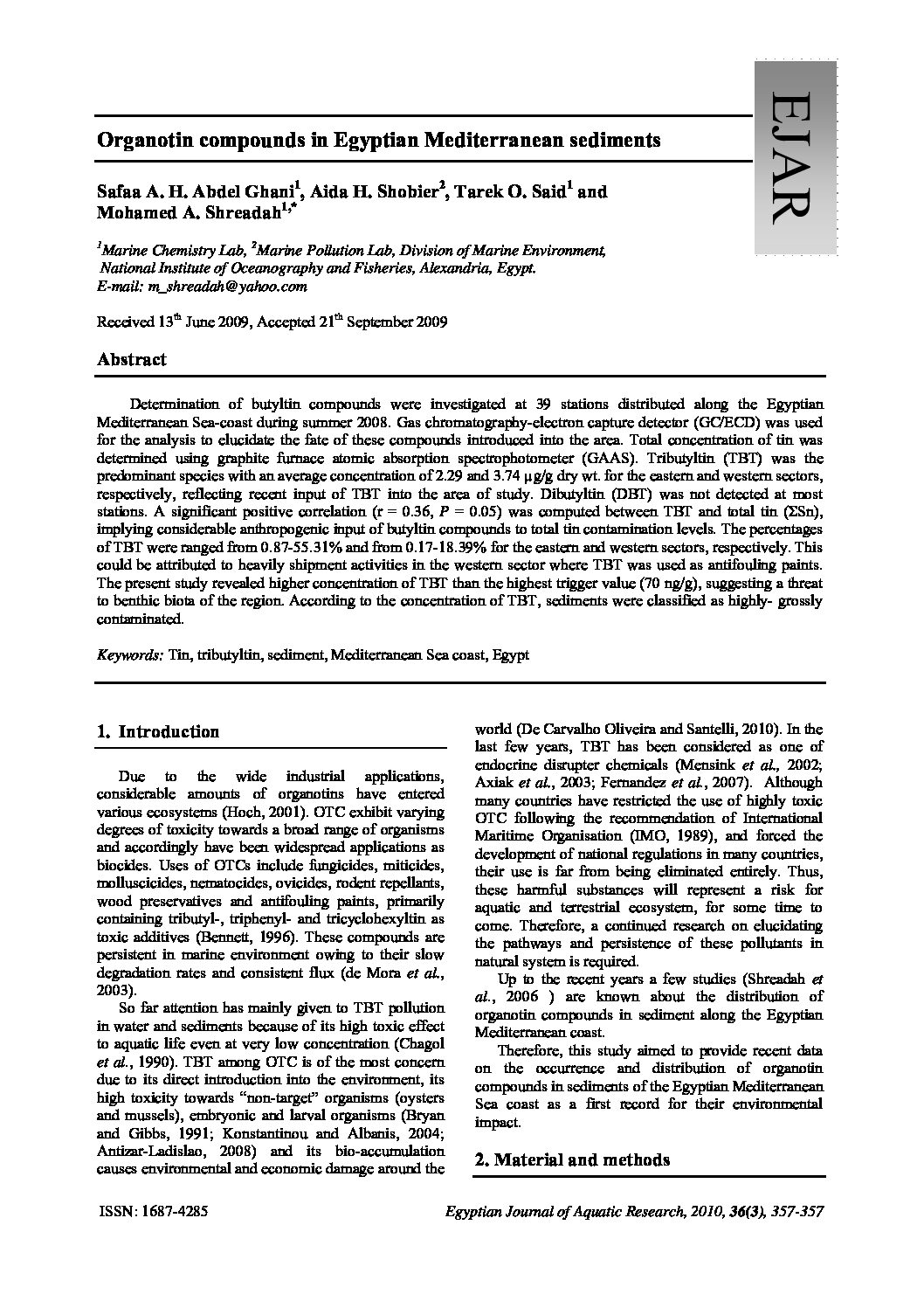Categories
vol-36Organotin compounds in Egyptian Mediterranean sediments
Safaa A. H. Abdel Ghani1
, Aida H. Shobier2
, Tarek O. Said1
and
Mohamed A. Shreadah1,*
1
Marine Chemistry Lab, 2
Marine Pollution Lab, Division of Marine Environment,
National Institute of Oceanography and Fisheries, Alexandria, Egypt.
E-mail: [email protected]
Received 13th June 2009, Accepted 21th September 2009
Abstract
Determination of butyltin compounds were investigated at 39 stations distributed along the Egyptian
Mediterranean Sea-coast during summer 2008. Gas chromatography-electron capture detector (GC/ECD) was used
for the analysis to elucidate the fate of these compounds introduced into the area. Total concentration of tin was
determined using graphite furnace atomic absorption spectrophotometer (GAAS). Tributyltin (TBT) was the
predominant species with an average concentration of 2.29 and 3.74 µg/g dry wt. for the eastern and western sectors,
respectively, reflecting recent input of TBT into the area of study. Dibutyltin (DBT) was not detected at most
stations. A significant positive correlation (r = 0.36, P = 0.05) was computed between TBT and total tin (ΣSn),
implying considerable anthropogenic input of butyltin compounds to total tin contamination levels. The percentages
of TBT were ranged from 0.87-55.31% and from 0.17-18.39% for the eastern and western sectors, respectively. This
could be attributed to heavily shipment activities in the western sector where TBT was used as antifouling paints.
The present study revealed higher concentration of TBT than the highest trigger value (70 ng/g), suggesting a threat
to benthic biota of the region. According to the concentration of TBT, sediments were classified as highly- grossly
contaminated.
Keywords: Tin, tributyltin, sediment, Mediterranean Sea coast, Egypt







